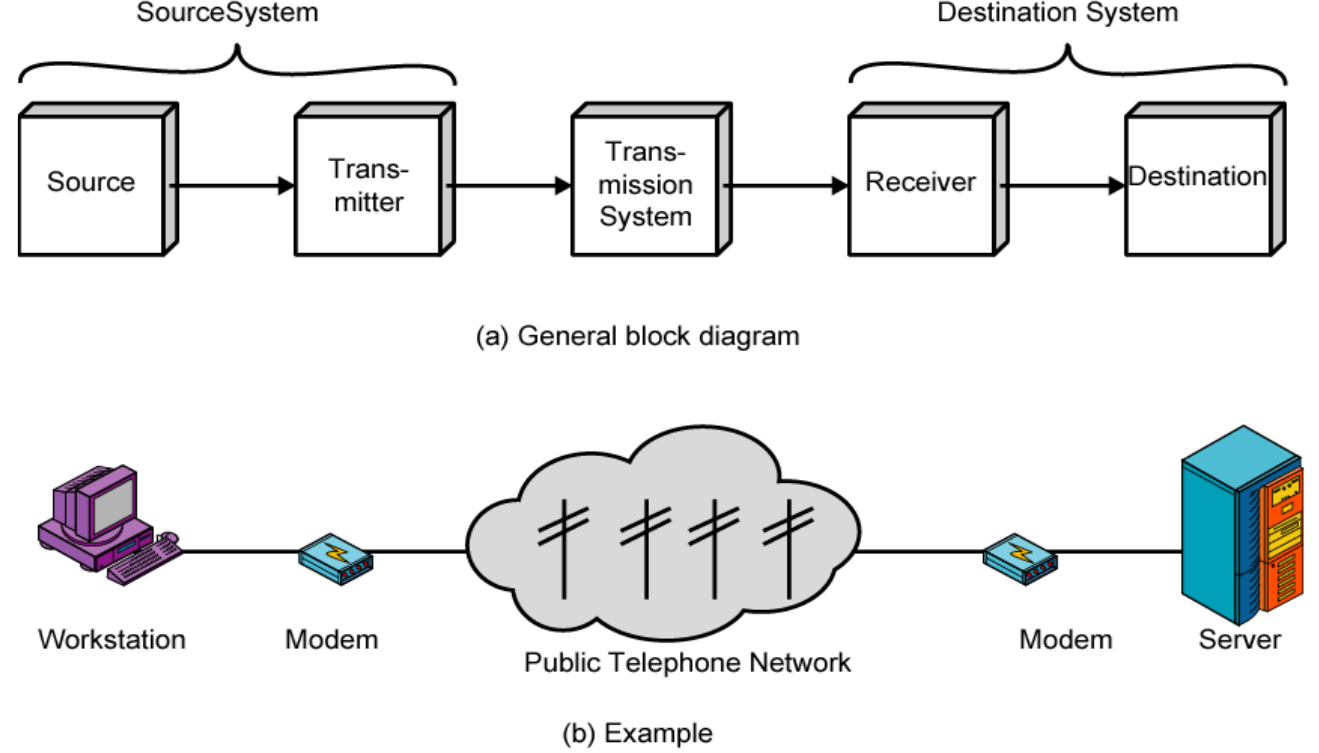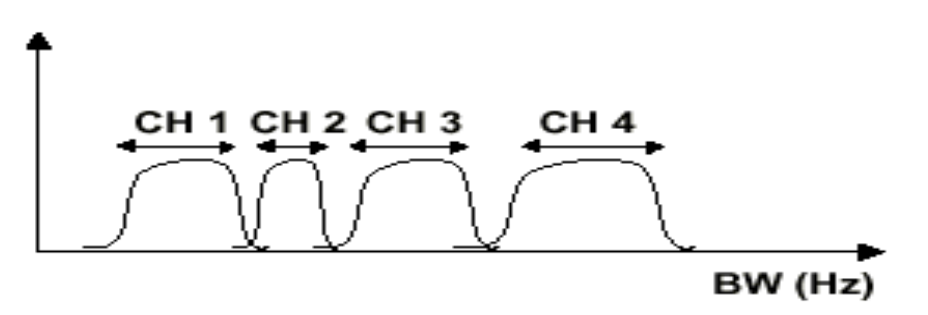1. The Virtual Network #
What is a Computer Network? #
A computer network is a collection of devices that are all interconnected.
Components of a network include:
- Hosts (computers, printers, etc)
- Links (coaxial cable, twisted pair, optical fibre, radio, satellite)
- Switches/routers (intermediate systems)
The goal of a computer network is to provide ubiquitous access to resources, and allow remote users to communicate.
Network Operating System #
A Network Operating System, or NOS, expands the role of a normal OS, in that it offers:
- A remote file system
- Running of shared applications
- Input and output to shared network devices
- CPU scheduling of networked processes
Types of Networks #
Networks can be classified in different ways:
- Based on management method: Peer-to-peer, client/server
- Based on network size: LAN, WAN, and MAN
- Based on topology: Bus, Star, Ring, etc
- Based on transmission media: Wired (UTP, coaxial, fibreoptic), and Wireless
Peer-to-peer Networks #
A peer-to-peer network contains no fixed clients or servers.
Resources are hosted on other clients on the network.
Client/Server Based Networks #
The client/server model involves requests and replies.
Requests are sent to the central server from a client and the server responds to the client with the requested resource.
Microsoft Networking Models #
- Workgroups:
- Peer-to-peer
- A logical grouping of several computers whose work or users are connected and share their resources
- Domains:
- Client/server
- A type of workgroup that includes a server
- Management made easy with Server Management application
- Discretionary access control
- A domain contains a domain controller, member servers (optional), and workstations or clients
Communications Model #

Multiplexing #
Multiplexing allows multiple channels or users to share link capacity.
Multiplexing devices or mechanisms:
- Multiplexor:
- Accepts data from multiple sources
- Sends data across a shared channel
- Demultiplexor:
- Extracts data from a shared channel
- Sends to the correct destination
Types of multiplexing:
- Frequency Division multiplexing
- Time Divison multiplexing
- Statistical multiplexing
Frequency Division Multiplexing (FDM) #
- Circuit mode (constant bandwidth) multiplexing technique
- Multiple items are transmitted simultaneously
- Each channel is allocated a particular portion of the bandwidth (known as bands)
- All modulated signals are carried simultaneously (as a composite analog signal)
- Example: TV, radio

Synchronous Time Division Multiplexing #
- Circuit mode (constant bandwidth) multiplexing technique
- Divides time into equal-sized quanta
- Assigns each quanta to flows on the physical link in a round-robin fashion.

Statistical Multiplexing #
With statistical multiplexing, each flow is broken into packets and sent to a switch, which can deal with the arriving packets according to a policy, such as, FIFO, round-robin, etc.
Unlike circuit mode multiplexing, statistical multiplexing allows for variable bandwidth.
Circuit Switching #
- Source first establishes a connection (circuit) to the destination
- Each router or switch along the way may reserve some bandwidth for the data flow
- Source sends the data over the circuit
- No need to include the destination address with the data since the routers know the path
- The connection is torn down
An example of circuit switching is the telephone network (analog).
- Advantages:
- Fast and simple data transfer, once the circuit has been established
- Predictable performance since the circuit provides isolation from other users, e.g. guaranteed bandwidth
- Disadvantages:
- In bursty traffic, circuit will be idle for significant periods of time
- Users with different bandwidth needs may need to use multiple circuits
Packet Switching #
A form of statistical time-division multiplexing
Source sends information as self-contained packets that have an address
- Source may have to break up single message into multiple packets
Each packet travels independently to the destination host
- Packets are passed from node to node between source and destination
- Routers and switches use the address in the packet to determine how to forward the packets
Advantages:
- Packets from different sources are interleaved
- Efficient use of resources (since they are used on demand)
- Can accommodate bursty traffic
- Allows for flexibility and robustness. Packets can travel through alternative paths (adaptive routing)
Disadvantages:
- Undesired situations such as congestion; long delays may occur
Packet Details #
- Depends on the underlying network:
- Minimum/maximum size
- Format
- A hardware packet is called a frame
Internetworking #
A gateway or router is needed to interconnect one or more networks.
Host-to-host connectivity is only possible if there’s a uniform addressing scheme and a routing mechanism.
Messages can be sent to a single destination (unicase), to multiple destinations (multicast), or to all possible destinations (broadcast).
Routers determine the next network point on a data unit’s path. They are essentially the sorting offices for the Internet Protocol.
LAN/MAN/WAN Networks #
Computer networks can also be classified according to their geographical coverage:
- Local Area Network (LAN): Covers a small geographic area, such as a building
- Metropolitan Area Network (MAN): Covers a larger geographic area, such as a town or city
- Wide Area Network (WAN): Covers a very large geographic area, such as the Earth.